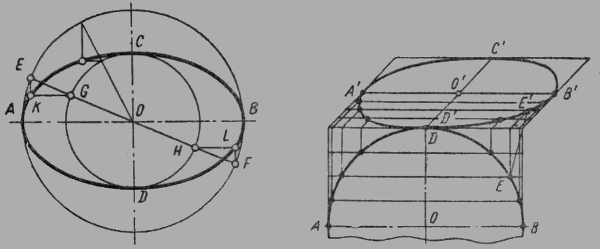You will need
- - the range;
- - gon;
- pencil;
- paper for sketching.
Instruction
1
Consider how to draw an ellipse in isometric view, lying in a horizontal plane. Construct a perpendicular to the axis X and Y. the intersection of the mark O.
2
From point O mark on the axes the segments is equal to the radius of the circle. Marked points indicate the numbers 1, 2, 3, 4. Through these points parallel to the guide axes of the straight.
3
From point O mark on the axes the segments is equal to the radius of the circle. Marked points indicate the numbers 1, 2, 3, 4. Through these points parallel to the guide axes of the straight.
4
Draw a arc from the vertex of obtuse angle of the connecting point 1 and 4. Similarly, connect the dots 2 and 3, having an arc from vertex D. Connect the points 1,2 and 3,4 of the centers of the small arcs. Thus constructed the ellipse in the isometricinscribed in a rhombus.
5
The second way to draw an ellipse in isometric is to circle map distortion. Draw X and Y axis, from point O, draw two auxiliary circle. The diameter of the inner circle equals the minor axis of the ellipse, the major axis.
6
In one quarter build auxiliary rays emanating from the center of the ellipse. The number of rays is arbitrary and the more, the more accurate the drawing. In our case it will be enough three auxiliary beams.
7
Will receive additional points of the ellipse. From the point of intersection of the beam with the smaller circle draw a horizontal line parallel to the X axis towards the outer circumference. From the top of the point lying at the intersection of the beam and of a large circle, drop a perpendicular.
8
The resulting point label figure 2. Repeat the operation for finding 3 and 4 points of the ellipse. Point 1 is located at the intersection of the Y-axis and the small circle, point 5 on the X-axis in place of the passage of the outer circumference.
9
Guide curve through these 5 points of the ellipse. At points 1 and 5 curve are strictly proportional to the axes. Spend a similar construction of an ellipse in isometric on the remaining ¾ of the drawing.


